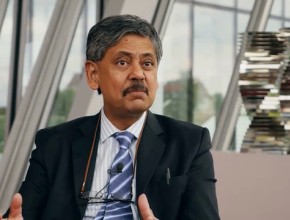Does anti-tumor necrosis factor (TNF) therapy inhibit the progression of radiological changes in the spine?
Filip Van den Bosch: You are asking very difficult questions for which it is difficult to give you an evidence-based answer. If you want my personal opinion, I think it slows down radiographic progression. Can we prove it in the way that evidence-based medicine asks us to prove it? No, because what has been done is you take patients who have been treated for 2 years in a clinical trial with a certain TNF-blocking agent, then you look at radiographic progression, you mix their radiographs with historical cohorts that go back 20 years – that is the first caveat, you are comparing 20-years-ago patients versus new patients – and then you see that there is over a 2-year time period of not a lot of change between the historically treated non-TNF patients and the TNF-treated patients.
The problem with that type of evaluation is that it may be too short. There is evidence that only after 4 or 5 years you start seeing the difference. It may be that the instrument that we are using does not tell us everything, because we typically only asses the cervical spine and the lumbar spine; we leave out – for technical reasons, because it is very hard to do that – the thoracic spine. So there may be a lot of reasons why we do not see [the difference].
The only evidence we have in favor of my argument that we indeed stop radiographic progression to some extent is that, first of all, you see that patients who have been for 10 years on an anti-TNF agent are doing functionally very well; their function does not decline, whereas normally you would expect that radiographic damage would be in parallel with function. It does not seem to go the same way. The second thing is that you see that some of those registry studies show that the use of anti-TNF agents gives you slower progression, but these studies are not controlled. That is the difficulty.
My personal impression is that yes, you are doing something in a structural way.
 English
English
 Español
Español
 українська
українська






